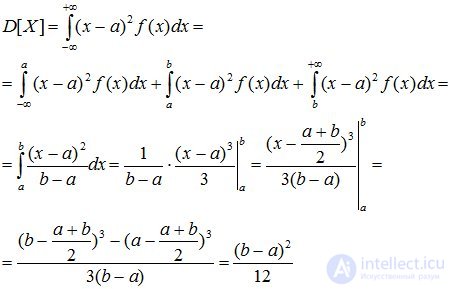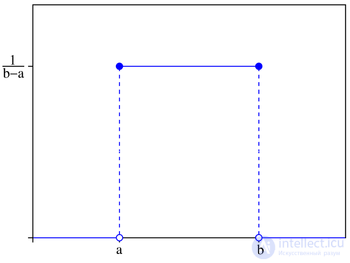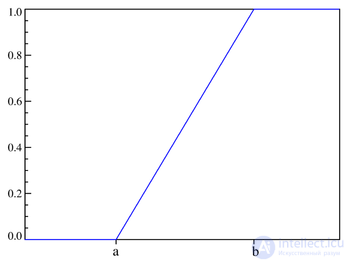Lecture
The continuous random variable X is evenly distributed in the interval [ a; c ] if its probability density in this interval is constant, i.e. if all values in this interval are equally likely:
 (8.1)
(8.1)
The value of the constant с is determined from the normalization condition:
 . (8.2)
. (8.2)
Distribution function:
 , (8.3)
, (8.3)
The numerical characteristics of a uniformly distributed random variable are defined as:
 (8.4)
(8.4)
 (8.5)
(8.5)
The standard deviation of the uniform distribution is
 (8.6)
(8.6)
The uniform distribution of a random variable is completely determined by two parameters: a and b , the interval at which the random variable is defined.
If necessary, you can determine the parameters a and b of the uniform distribution of the known values of the expectation m X and variance D x random variable. For this, a system of equations is made up of the following form:
 , (8.7)
, (8.7)
from which the desired parameters are determined.
The probability of a uniformly distributed random variable falling into the interval [α, β) is determined as follows:
 where
where 
Probability density  | |
Distribution function  | |
| Designation |  , ,  |
| Options |  , ,  —Shift factor —Shift factor  - scale factor - scale factor |
| Carrier |  |
| Probability density |  b \ end {matrix}"> b \ end {matrix}"> |
| Distribution function |  |
| Expected value |  |
| Median |  |
| Fashion | any number of segment  |
| Dispersion |  |
| Asymmetry coefficient |  |
| Coefficient of kurtosis |  |
| Informational entropy |  |
| Generating function of moments |  |
| Characteristic function |  |
Comments
To leave a comment
Probability theory. Mathematical Statistics and Stochastic Analysis
Terms: Probability theory. Mathematical Statistics and Stochastic Analysis